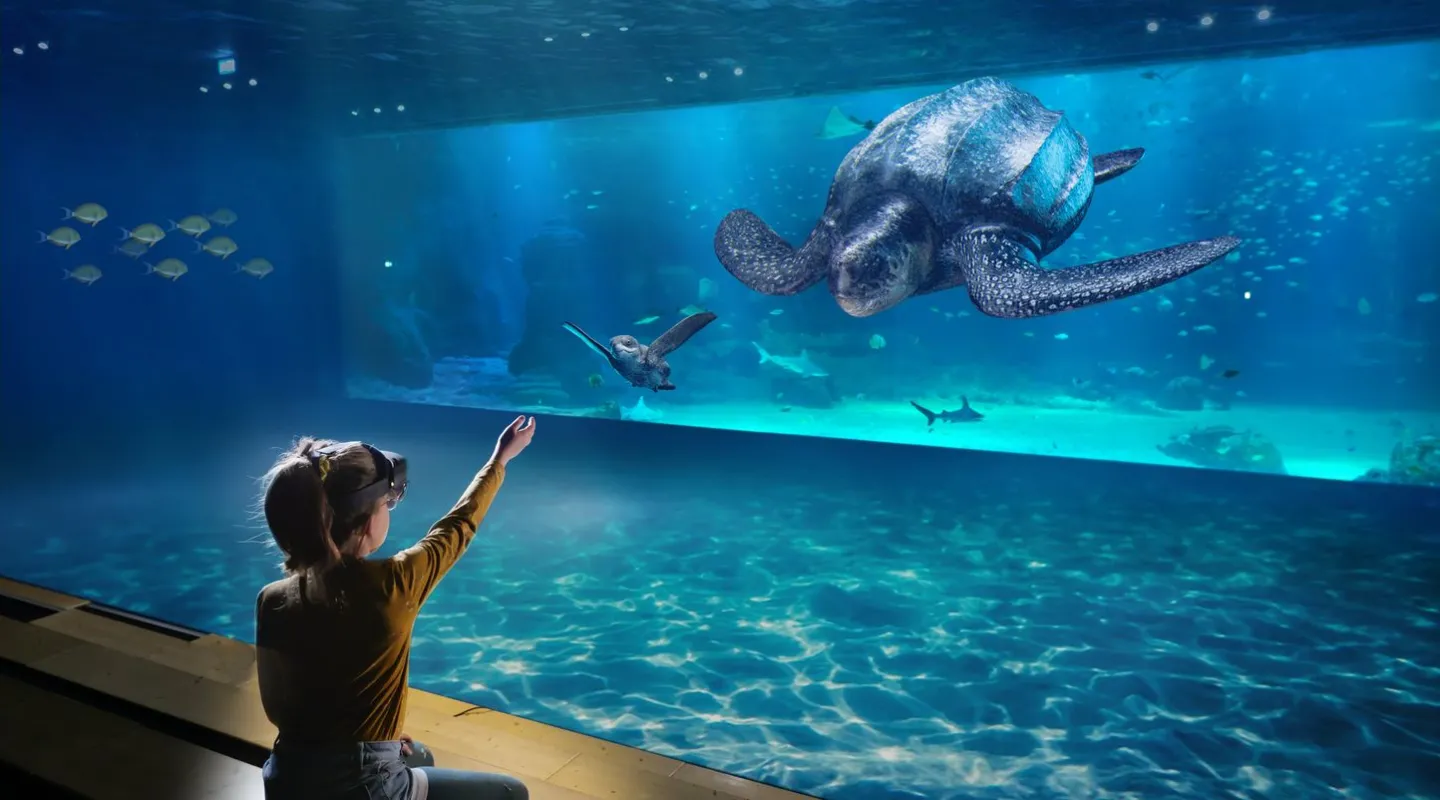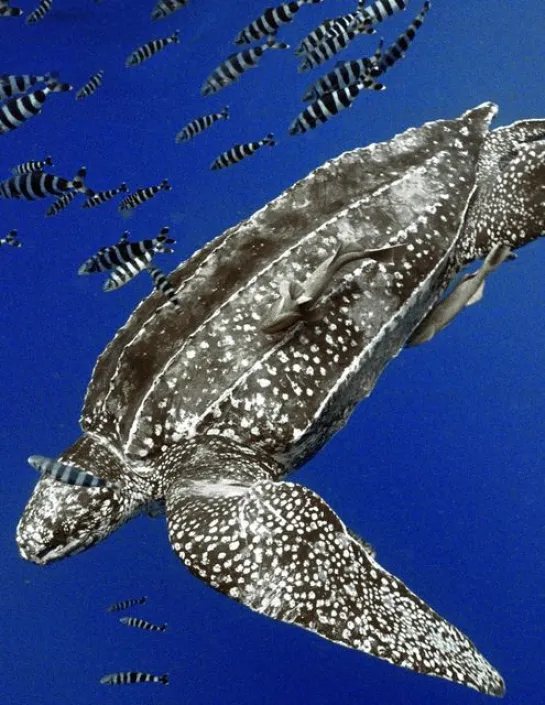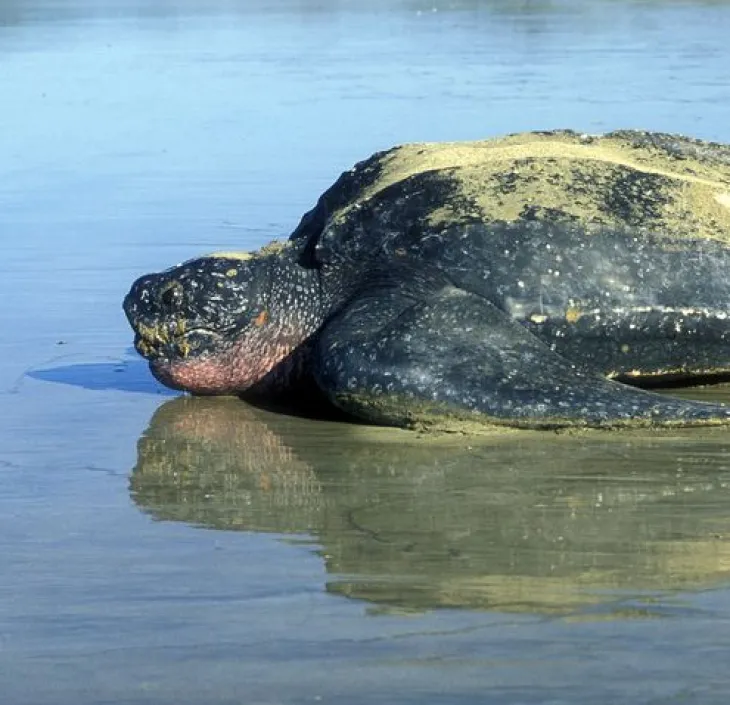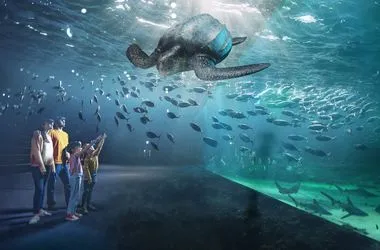VIRTUAL ANIMAL IN AUGMENTED REALITY
The leatherback turtle is one of the impressive figures that you will be able to discover in the Grand Large experience.

Virtual animals
VIRTUAL ANIMAL IN AUGMENTED REALITY
The leatherback turtle is one of the impressive figures that you will be able to discover in the Grand Large experience.

Identity card
Appendix I. Declining; protected species in France.
Found in all oceans except the Arctic and Antarctic
Pelagic, in the open sea to a depth of 1,300 m, but it nests in coastal areas.
1,5 à 2 m, 300 – 500 kg
Jellyfish, salpids, zooplankton, small crustaceans and sea urchins.
50 years

The body of the leatherback turtle has not evolved since the time of the dinosaurs.
The leatherback turtle is a highly migratory animal that can travel more than 16,000 km a year from its nesting sites on its quest for food. This is because the leatherback turtle follows the populations of jellyfish and cephalopod that make up its diet.
At birth, the little turtles make their way to the ocean and on the way between the nest and the ocean, these 7 cm turtles become an easy prey for birds, crabs or dogs that feast on them.
They can be found in all the oceans of the world except the Arctic and Antarctic oceans.
It is a pelagic species that lives on the high seas and can dive to depths of more than 1,300 metres and stay at that depth for 85 minutes before coming back up to the surface to breathe.
The leatherback turtle population is declining in several parts of the world, particularly in the Pacific. Turtles are under threat both on their nesting beaches and in the sea.
journey on the high seas

Augmented-reality animals
The Ocean Mag
In the spotlight
Found in all the world's seas, the jellyfish intrigues and fascinates. But watch out, you might get burnt !

Article
On 15 July, 40 juvenile Atlantic lookdowns, born thanks to the partnership between Nausicaá and BioNaMeris, will be sent to La Rochelle.
Article
In order to breed, the male Banggaï cardinalfish recovers the fertilised eggs and stores them in its mouth until they hatch.